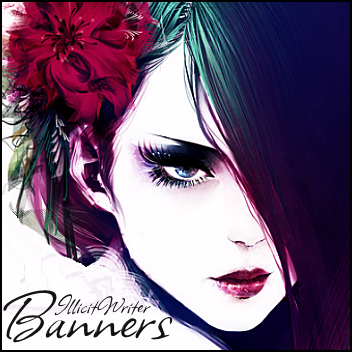Hi guys!
This week the question for the Writing Lab is a very, very big one: how do I create an outline?
I guess that, for everyone, the time we spend writing is often "stolen" among so many other things to do; it's a precious time, so it's better to make good use of it. A solid outline gives you a map and is a good way to avoid to abandon a story after spending so many days working on it.
Big questions require big experts... so for this post I have the pleasure to present the answer of a published author and professional editor: Sandi Layne.
Let's read her post and thank you Sandi!
Originally posted on: http://sandyquill.wordpress.com/2011/05/03/112/
From tangles of string to….?
For SANDI, having an outline is essential in writing a story that will be longer than five chapters.
Which is, by and large, mostly what I write.
I need one so that I can plan a well-balanced trip. On a real roadtrip, the journey is the thing (and in writing, the writing is the valuable process in many cases) but for a book…getting to the end with the major conflicts resolved is kind of necessary for a story a reader will be satisfied with as a final product.
All ends do not need tying. But the biggies…yes.
So, how I make an outline:
When I have a story come to me, I know where I’m ending it. That might be true of many novelists; it might be idiosyncratic. I couldn’t tell you.
I do NOT do any “Harvard Formatting” when I outline. This is just for me, so all that is not required.
Knowing where the story will end means I have a final line on the outline. I write it in on the bottom of my page.
I usually have already started a story before I outline (because I only pursue an outline if a plot has stuck to me enough to get me to write an entire first chapter. And maybe second…) so I put that at the top.
Then, I divide my page into two long columns. In one column, I put my primary conflict steps, from introduction (which should have happened in the first chapter) to resolution (which is already down at the bottom of my page). In this column, I sketch out ideas of how to get from point A to point Z. You may find that you have GREAT ideas that lead up to the resolution and some AMAZING ways to get them rolling, but the middle is all nebulous.
That’s GREAT. Don’t worry about it. Just write down what you think of at the moment.
Then, slide over to the second column.
Remember, this little exercise is for folks who might need some structure in starting an outlining discipline. Once you are comfortable writing and outlining, some of your outlines may be as short and abstract as… well… some of mine are!
In the second column is where you have your other subplot ideas. If you’re writing a romance novel in which the PRIMARY CONFLICT/PLOT is the romance, then this is the column for the business surrounding the romance. For instance: There might be The Work Issue in this columm, as well as the Pregnant Best Friend/Sister issue. Or the Wedding Disaster plotline. And so on. In this column (or columns if that helps) sketch out your idea of the order in which these minor subplots might be solved.
Then, when you have an idea about each conflict and possible resolutions, you will PROBABLY have an idea of how to slot the subplots into the larger major conflict plotline.
Your outline could then be a series of phrases:
Sue and Rhi – coffee @ Starbux. Same time, Ryan and Mitch in Philly. Beers. (Ryan doesn’t know Sue’s preggers!)
Travel chapter. Honesty issue arises…Mitch knows Rhi from high school and nasty break up flashback.
Big phony smile rehearsal. First fight with Rhi and Mitch. VERY POLITE.
…
You can choose to separate these into chapters or just go with the flow of the story. You might find, though, that chapters are easier. They are for me, anyway.
It seems like a lot of work, I know. And it can be. At first. As with any skill, though, you will become more speedy and accurate over time.
IF THIS IS NOT WHAT YOU WANT TO DO then by all means, just write away. It works for many people! This approach is primarily for folks who find themselves floundering with an idea for a story but lack a method for ordering it so they can write coherently.
Please drop me a line if there’s anything I can make more clear.
And have a GREAT evening!
You know the drill: comments are welcome!
This week the question for the Writing Lab is a very, very big one: how do I create an outline?
I guess that, for everyone, the time we spend writing is often "stolen" among so many other things to do; it's a precious time, so it's better to make good use of it. A solid outline gives you a map and is a good way to avoid to abandon a story after spending so many days working on it.
Big questions require big experts... so for this post I have the pleasure to present the answer of a published author and professional editor: Sandi Layne.
Let's read her post and thank you Sandi!
Originally posted on: http://sandyquill.wordpress.com/2011/05/03/112/
From tangles of string to….?
For SANDI, having an outline is essential in writing a story that will be longer than five chapters.
Which is, by and large, mostly what I write.
I need one so that I can plan a well-balanced trip. On a real roadtrip, the journey is the thing (and in writing, the writing is the valuable process in many cases) but for a book…getting to the end with the major conflicts resolved is kind of necessary for a story a reader will be satisfied with as a final product.
All ends do not need tying. But the biggies…yes.
So, how I make an outline:
When I have a story come to me, I know where I’m ending it. That might be true of many novelists; it might be idiosyncratic. I couldn’t tell you.
I do NOT do any “Harvard Formatting” when I outline. This is just for me, so all that is not required.
Knowing where the story will end means I have a final line on the outline. I write it in on the bottom of my page.
I usually have already started a story before I outline (because I only pursue an outline if a plot has stuck to me enough to get me to write an entire first chapter. And maybe second…) so I put that at the top.
Then, I divide my page into two long columns. In one column, I put my primary conflict steps, from introduction (which should have happened in the first chapter) to resolution (which is already down at the bottom of my page). In this column, I sketch out ideas of how to get from point A to point Z. You may find that you have GREAT ideas that lead up to the resolution and some AMAZING ways to get them rolling, but the middle is all nebulous.
That’s GREAT. Don’t worry about it. Just write down what you think of at the moment.
Then, slide over to the second column.
Remember, this little exercise is for folks who might need some structure in starting an outlining discipline. Once you are comfortable writing and outlining, some of your outlines may be as short and abstract as… well… some of mine are!
In the second column is where you have your other subplot ideas. If you’re writing a romance novel in which the PRIMARY CONFLICT/PLOT is the romance, then this is the column for the business surrounding the romance. For instance: There might be The Work Issue in this columm, as well as the Pregnant Best Friend/Sister issue. Or the Wedding Disaster plotline. And so on. In this column (or columns if that helps) sketch out your idea of the order in which these minor subplots might be solved.
Then, when you have an idea about each conflict and possible resolutions, you will PROBABLY have an idea of how to slot the subplots into the larger major conflict plotline.
Your outline could then be a series of phrases:
Sue and Rhi – coffee @ Starbux. Same time, Ryan and Mitch in Philly. Beers. (Ryan doesn’t know Sue’s preggers!)
Travel chapter. Honesty issue arises…Mitch knows Rhi from high school and nasty break up flashback.
Big phony smile rehearsal. First fight with Rhi and Mitch. VERY POLITE.
…
You can choose to separate these into chapters or just go with the flow of the story. You might find, though, that chapters are easier. They are for me, anyway.
It seems like a lot of work, I know. And it can be. At first. As with any skill, though, you will become more speedy and accurate over time.
IF THIS IS NOT WHAT YOU WANT TO DO then by all means, just write away. It works for many people! This approach is primarily for folks who find themselves floundering with an idea for a story but lack a method for ordering it so they can write coherently.
Please drop me a line if there’s anything I can make more clear.
And have a GREAT evening!
You know the drill: comments are welcome!



























Very interesting. Sandi's process is quite similar to my own. I can't outline a story until I have written at least an opening chapter and a final scene. I like the two-column outline idea a lot and will try it on my current projects-in-incubation. Certainly I can't agree more that good outlines produce good stories and it is an essential skill to invest in mastering. I agree with Minisinoo that even character-driven stories must have compelling plots. Min has written a host of wonderful essays about the process of writing. In real life, she is a writer of mainstream adult fiction, as well as a professor of Greek language and history. Her essays on writing as well as links to her rich library of fanfiction may be found on her livejournal page:
ReplyDeletehttp://minisinoo.livejournal.com/
Dear Miaokuancha,
ReplyDeletethank you for joining the discussion!! Sandi has always great suggestions about reading and writing and I love that she goes straight to the point.
Thank you also for the suggestion about Minisinoo, I'll check her LJ, I teach Italian and Latin language and literature in real life.
All the best!
Raum